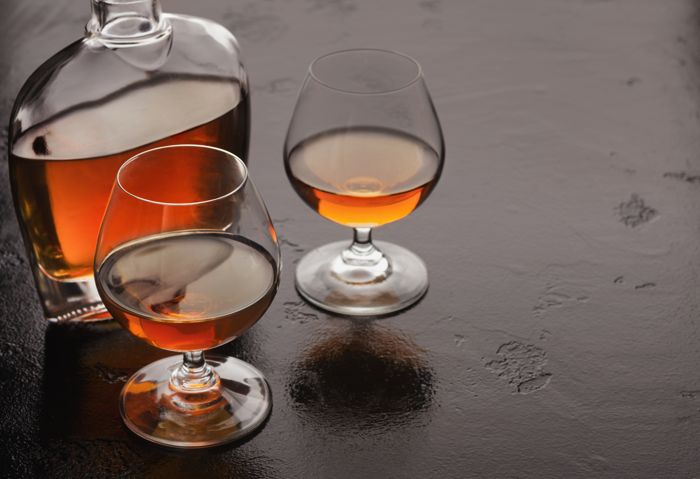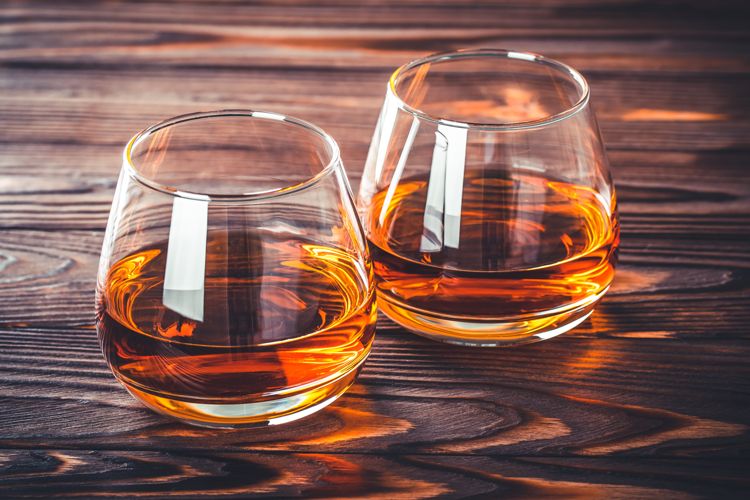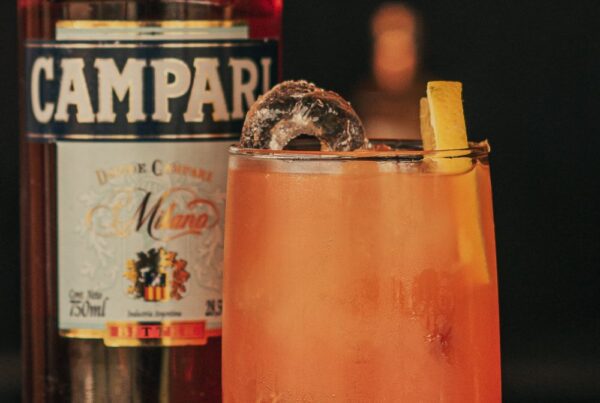As an experienced cook and wine expert, I often get asked about cooking with alcohol, especially brandy.
Cooking and baking with brandy adds depth and richness to many dishes. However, not all brandies are created equal, and choosing the right one can make all the difference.
In this article, you will learn how to choose brandy for cooking and baking.
Reserve premium brandy, like Cognac, for drinking and go for more affordable options like Christian Brothers, E&J and Paul Masson.
The best brandy for cooking will depend on your budget, the dish you are making, and taste preferences.
Let’s talk about what brandy is and what it isn’t, and then go through everything you need to know about brandy for cooking and baking.

Contents
- 1 What is brandy?
- 2 What isn’t brandy (but sounds like it)
- 3 Role of brandy in cooking
- 4 Role of brandy in baking
- 5 Brandy for cooking and baking
- 6 What brandy to use
- 7 Tips for buying brandy for cooking and baking
- 8 Affordable brandy that can be used for cooking
- 9 Budget brandy
- 10 Brandy labeling
- 11 Difference between Cognac and brandy
- 12 Difference between Armagnac and brandy
- 13 American brandy
- 14 Best substitutes for brandy in cooking
- 15 FAQs
What is brandy?
Brandy is distilled wine, specifically wine made with fermented whole, fresh grapes. Most brandy is either aged in oak or colored with caramel before bottling, giving it an amber or brown color.
Traditionally an after-dinner drink, nowadays Brandy is also commonly used in cocktails and as an ingredient in many recipes.
Brandy usually contains somewhere between 35-60% alcohol by volume (abv).
What isn’t brandy (but sounds like it)
The exact definition of brandy varies around the world, but a true brandy is a grape-derived product.
In the EU, for example, brandy must be grape-based and aged for at least 6 months in oak.
In the US, brandy that is not grape-based must be labelled as such; for example, “apple brandy”.
So, fruit spirits made from fruit other than grapes are technically not brandy, but are often called brandy; for example, Calvados which is made from apples is known as a “cider brandy” but technically is not brandy.
Similarly, Kirsch—a German fruit spirit made with cherries—is known as a “cherry brandy” but is also not a traditional brandy.
Role of brandy in cooking
Brandy is used in cooking for a number of reasons.
Tenderize meat
Adding brandy to meat marinades tenderizes the meat and infuses it with flavor.
The alcohol in the brandy helps break down meat proteins, resulting in tender meat dishes.
Deglaze the pan
Add brandy to the pan to deglaze after cooking meat or vegetables.
This process incorporates the delicious browned bits stuck to the bottom of the pan, adding flavor and richness.
Depth of flavor and color
When used in savory dishes like stews and sauces, brandy enhances the depth of flavor and imparts a rich, caramelized color.
It elevates the overall taste and appearance of the dish, making it more visually appealing and flavorful.
To flambé
Flambéing is a culinary technique where high-proof spirits, such as brandy with an alcohol by volume (ABV) typically above 40%, are ignited briefly to create a dramatic burst of flames, imparting both caramelized flavors and visual appeal to dishes.
Acts as a Preservative
The alcohol in brandy can also act as a natural preservative.
When added to cooking, it can extend the shelf life of food by inhibiting the growth of mold and bacteria.
This can be particularly useful for dishes that need to be stored for longer periods, ensuring they remain fresh.
This works well for sauces and condiments, particularly those that contain fruits or berries; for example,
cranberry sauce, chutney and jams recipes.
Role of brandy in baking
Brandy also plays a number of roles in baking.
Moisture retention
When added to batters or used to soak fruits, brandy helps retain moisture in baked goods, keeping them moist and tender.
Acts as a preservative
The alcohol content in brandy acts as a natural preservative, extending the shelf life of baked goods, particularly those containing dried fruits or nuts.
Fruitcake traditionally contains dried fruits such as raisins, currants, and candied fruits, which have a tendency to dry out over time.
To prevent this, fruitcake recipes often call for soaking the dried fruits in brandy or rum before incorporating them into the cake batter.
The high alcohol content in the brandy acts as a preservative, helping to inhibit the growth of mold and bacteria on the fruits.
Fruitcakes and puddings made with alcohol can last several months due to the addition of alcohol.
Provides aroma
Brandy can infuse baked goods with its complex and concentrated aromas, enhancing the overall aroma and flavor of baked goods.
Brandy for cooking and baking
When it comes to brandy in recipes, it’s wise to take a similar approach to that of recipes using wine, that is to say, use a brandy that you would be happy to drink, but keep the premium, expensive stuff for drinking only.
Of course, there may be exceptions to this; for example, you have a bottle nice of Cognac sitting around and you need a splash to deglaze the pan.
Well, in that case, I might use the Cognac rather than go out and buy another bottle of brandy.
What brandy to use
Most recipes will simply state “brandy” as an ingredient.
When a recipe is more specific, it often references Cognac or Armagnac. Well, guess what? Cognac and Armagnac are both types of brandy. So, in most cases you can use any brandy.
The flavors differ from brandy to brandy of course, but flavor is just one element of what brandy is bringing to the dish, as we discussed already.
If you want to follow a recipe exactly, that is ideal, but you don’t need to feel like you have to go out and buy an expensive brandy or a particular brandy.
So, unless a recipes states that you need to use a particular brandy or the recipe won’t work (even then I’m sure there is a suitable alternative), use what you have or what you can find and can afford.
Tips for buying brandy for cooking and baking
Use the following tips to find quality brandy at reasonable prices.
Buy half bottles or smaller
Opting for half bottles or smaller sizes of brandy can be more economical, especially if you don’t use brandy frequently in your cooking or baking.
Purchasing smaller quantities ensures freshness and minimizes waste.
It also means you can opt for a better-quality brandy for your budget.
Spanish brandy
Look for Spanish brandy options.
Spain produces great value but high-quality brandies with rich flavors and complex profiles.
Look for Spanish brandies labeled as “Brandy de Jerez” for authentic and flavorful choices that can enhance your dishes.
Look for indications of quality
When selecting brandy for cooking and baking, pay attention to indicators of quality such as barrel ageing and aging statements (VS, VSOP, XO), which signify the aging process and complexity of the brandy.
Check for awards or recognitions on the label, as these can indicate a brandy of superior quality.
Supermarket own-brand brandy
Don’t overlook supermarket own-brands when purchasing brandy for cooking and baking.
Many supermarkets offer affordable yet decent-quality brandy options under their own labels. Some supermarkets even sell own-brand Cognac.
These own-brands can be a budget-friendly choice without compromising too much on flavor or quality, making them suitable for cooking and baking.
German supermarkets like Lidl and Aldi have a knack for producing decent quality at great prices. Check out what your local supermarket has.

Affordable brandy that can be used for cooking
E&J Brandy
This is a popular American brandy that is often used for cooking. It has a mild flavor and is reasonably priced.
Paul Masson Brandy
Another American brandy that is often used for cooking, Paul Masson has a slightly sweeter flavor than E&J and is also reasonably priced.
Christian Brothers Brandy
This California brandy has a richer, more complex flavor than the previous two and can be a good choice if you’re looking to add more depth to your dish.

Budget brandy
Generally speaking, cheap brandy won’t be made to the same high standards and probably won’t be aged in barrels.
So, it won’t have complexity and depth of flavor, but if you are on a tight budget, a cheap brandy to feed your Christmas cake, for example, can do the job just fine.
Brandy labeling
Labeling terms provide valuable information about the aging, production methods, and characteristics of different brandies.
This can help you make informed purchasing decisions based on personal preferences and tastes.
Age Statement
An indication on the label specifying the age of the youngest brandy included in the blend.
Age statements are common on premium brandies and provide consumers with information about the aging process.
VS (Very Special)
A labeling term indicating that the brandy has been aged for a minimum period, typically at least two years, although regulations may vary by country.
VS brandies are generally younger and may have a lighter flavor profile.
VSOP (Very Superior Old Pale)
A designation indicating that the brandy has been aged for a longer period, typically at least four years.
VSOP brandies are often smoother and more complex than VS brandies, with richer flavors and aromas.
XO (Extra Old)
A premium designation indicating that the brandy has been aged for an extended period, typically at least six years.
XO brandies are considered high quality and may exhibit greater depth, complexity, and smoothness.
Hors d’âge
A French term meaning “beyond age,” used to denote brandies that have been aged significantly longer than required for XO designation.
Hors d’âge brandies are often rare and highly prized for their exceptional quality and complexity.
Solera Brandy
Brandies aged using the solera system, where a portion of older brandy is continuously blended with younger brandy over time.
Brandy de Jerez Solera
This is the youngest and fruitiest style with a minimum average age of 6 months
Brandy de Jerez Solera Reserva
Minimum average age of one year
Brandy de Jerez Solera Gran Reserva
This style is aged the longest. Regulations require a minimum average age of 3 years, but most brands greatly exceed these requirements.
Single Barrel
A labeling term indicating that the brandy comes from a single barrel rather than a blend of multiple barrels.
Single barrel brandies may exhibit unique characteristics and nuances specific to that barrel’s aging environment.
Blend
Indicates that the brandy is a blend of spirits from different barrels, vintages, or grape varieties.
Blended brandies are crafted to achieve a consistent flavor profile and balance, often combining brandies of different ages and characteristics.
Limited edition
A labeling term indicating that the brandy is produced in limited quantities or for a limited time period.
Limited edition brandies may be specially aged, blended, or bottled for a unique and exclusive offering.
Double distilled
Indicates that the brandy has undergone two rounds of distillation, resulting in a smoother and more refined spirit.
Double distilled brandies are often associated with higher quality and purity.
Bottled in Bond (BIB)
A labeling term indicating that the brandy meets specific legal requirements, including being aged for a minimum of four years in a bonded warehouse under government supervision. Bottled in bond brandies are often considered high quality and authentic.
Immature
In the US, brandy that has been aged for less than 2 years in oak must be labelled “immature”.
Difference between Cognac and brandy
Cognac is a type of brandy that can only be made in the Cognac region in France.
To be called Cognac and qualify for the Cognac Protected Appellation of origin (PDO) it has to comply with regulated specifications, its grapes must be grown in Cognac, and the wine made from them produced there. The area of Cognac is defined by strict borders encircling the Charente River.
Cognac is made with the Ugni Blanc grape. It must be aged for at least two years in oak barrels and double distilled using a copper pot still.
There are different quality grades for Cognac that indicate how long it was aged. V.S. is brandy aged for at least two years and V.S.O.P has been aged for at least four years etc.
Cognac is world-renowned for a reason—it is the best of the best.
It tastes smooth with fruity and floral aromas.
If a recipe requires brandy, you can use Cognac; however, it’s worth noting that Cognac is a premium drink, so if the recipe requires a large volume of brandy, a more economical choice may be warranted.
Cognac ranges in price from approximately $55 to over $3,000!
Some of the best cognac brands include:
- Hennessy
- Rémy Martin
- Martell
- Hardy

Difference between Armagnac and brandy
Armagnac brandy can only be made in the Armagnac region in France.
Armagnac is a defined Controlled Appellation of Origin (AOC).
It is made from a mix of folle blanche, ugni-blanc, colombard, and baco 22A white grapes.
Armagnac is typically distilled once and then aged in oak barrels. It is typically more fragrant than Cognac and made on a much smaller scale than Cognac.
Armagnac has a similar classification to Cognac. V.S. refers to Armagnac aged in oak casks for two to three years, while V.S.O.P. refers to Armagnac aged for four to five years in oak casks.
Some of the best Armagnac brands include:
- Delord
- Castarède
- Laubade
- Arton

American brandy
American brandy isn’t as controlled as French or EU countries in general.
As previously mentioned, American brandy that is not grape-derived must be labelled as such.
American brandy that has been aged for less than 2 years in oak must be labelled “immature”.
Some American brandy may also be labeled “BIB” which stands for “bottled in bond”. This labeling term usually applies to whiskey, but some brandy is also labeled BIB.
It is an indication that brandy meets specific legal requirements, including being aged for a minimum of four years in a bonded warehouse under government supervision.
Bottled in bond brandies are often considered high quality.
Best substitutes for brandy in cooking
Brandy is often included as an ingredient for its alcohol content, e.g., to deglaze a pan or help preserve a cake or to give a recipe an alcohol kick. You can achieve the same or similar with another spirit alcohol. Generally speaking, you can substitute brandy for the following:
Whiskey can be a good substitute, especially for fruit cake recipes.
Fruit spirits, such as Calvados (known as cider brandy) and Kirsch (known as cherry brandy) can be a good substitute for fruity dessert recipes and cakes.
Tawny Port – Port wine is wine with spirit added that is then aged.
So, it has a similar flavor profile to brandy and can make a good substitution; however, Tawny Port wine is sweet, so you will need to take that into consideration. The color may also not be exactly the same as brandy.

FAQs
Is brandy the same as Cognac for cooking?
Essentially, yes. Cognac is a type of brandy. So, generally speaking, you can substitute one for the other in cooking.
Can I use cheap brandy for cooking?
Yes, expensive brandy is better kept for drinking purposes.
Is Calvados brandy?
Technically it is a fruit spirit but is known as “cider brandy” because it is made using apples.
Can I use whiskey instead of brandy for a fruit cake?
Yes! Whiskey is a very traditional ingredient in Christmas cakes and puddings.




